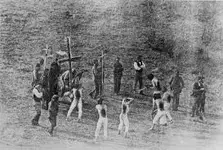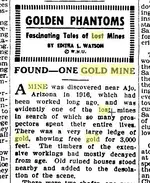sdcfia
Silver Member
In the Josiah Ward Treasure Mountain series of 1921, one of the segments is titled "The Mystery of the Buried Treasure Chart". In this article, Ward writes that one of his readers informed him that the dates of the original French expedition were from 1798-1802. While looking through a register of documents in the archives of New Mexico, I noticed a letter dated July 14, 1797. A brief summary of the letter said that an expedition from Halifax, Nova Scotia could threaten Spanish territory. I received a copy of the document but it was written in old Spanish and had not been translated. Sdcfia contacted Mike McChesney, Gollum, and Mike agreed to translate the letter. Here is Mike's rough translation of the letter.
Finding myself with news that the English are thinking of Domains S.M. (?Domains of his Spanish Majesty?) in this America , forming an expedition of 9-10000 men, out of Halifax in Canada , which I could just see try something against that province if down the river Missouri and others who enter the Mississippi then notice VM. cautioning that this with the utmost vigilance and to seek inquiry dispatching some Indian allies to the most distant to maintain communication. Whether those enemies made the expedition and passages of our possessions to the route taking VM for this purpose. All measures reserved to suggest his zeal and knowledge.
Mike also provided the following link. Start reading on page 77.
https://books.google.com/books?id=q...page&q=canada attack new orleans 1797&f=false
After reading the link, you will see that the expedition from Halifax was misinformation fabricated by the French spy, Collot.
Thanks to Sdcfia for contacting Mike and thank you Mike for your time and expertise.
Thanks much for the information, mdog. The French presence in North America is becoming a very fascinating subject for me.





